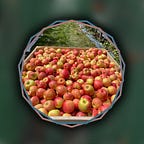The Harvesting of Apples
You can use a few tricks to ensure you’ll get the most out of your harvest, no matter how you choose to pick your apples. You must first confirm that you are selecting the fruit at the proper time. The second thing you should do is make sure you’re keeping them appropriately. And last, try not to squeeze the fruit too firmly.
You may assess ripeness using a range of maturity markers, including colour, taste, and starch breakdown. Although the combination of maturity signs is crucial, it’s also vital to remember that apples sometimes ripen differently. Before they are entirely ripe, certain types may turn red.
Most apples have a variety of colours on their skin; however other types only have yellow skin. While the skin’s paint is often used to gauge ripeness, it’s only sometimes reliable.
A ripe apple should typically be crisp and have a pleasant, non-starchy texture. It should also be solid and have a sweet taste. Avoid eating mushy apples since they are overripe.
In bright weather, and particularly in hot weather, apples mature rapidly. How quickly fruit turns starch to sugar is another indicator of ripeness. Along with ripening, apples have fast cell development. Fruit size increases due to this expansion, which might occur every day.
Trying to avoid pressing down on an apple is not a good idea. Your hands are coming into contact with mould and germs, which may serve as a breeding ground for illness. A sealed bucket is an intelligent technique to prevent this from happening while storing apples. They may also be composted.
Making sure you harvest the apples in the proper sequence will ensure you get your hands on the healthiest apples possible. This may need to be done in batches for a week. You can use adjustable bucket straps to ensure that all of your apples enter the bin simultaneously.
Try to pick your fruit on the side facing the sun to determine the optimum time. Fruit ripens more quickly under the sun.
Make sure to clean your bins before adding fruit to them while you’re at them. This is because other food in your kitchen might ripen more quickly due to the ethylene gas produced by rotting or broken fruit.
You must know how to do it properly, whether collecting apples for fresh keeping or storing them. Your apples will stay fresh for months if you do this.
It’s critical to treat the fruit with care when picking it. This will lessen the number of undesirable individuals you wind up with.
It is crucial to sift apples to get rid of any dents or blemishes before keeping them. Remove the stems and separate the apples to do this.
The apples should be kept in a cold, dark area. You can do this in your closet, cellar, or even garage. A temperature of 30 to 35 degrees Fahrenheit is required. The apples must also be kept well-ventilated.
After the apples are picked, they should be wrapped separately in paper or butcher paper. As a result, they will stay fresher, and it will be simple to tell the early ripeners from the others.
The best approach to having apples accessible over the winter is to preserve them after harvest. You may enjoy apples’ crisp taste and texture for a more extended period by holding them. When preserving apples, there are a few safety considerations to bear in mind. Apples should be kept in a cold, dark area and never be used if broken or bruised.
Apple drying is a straightforward technique. If you have a food dehydrator, use it. If not, use your oven. You can dry apples for up to eight hours, depending on the kind you use. Additionally, let the apples cool before putting them in the jars.
You must seal the jars if you intend to store apples for a long time to stop the fruit from oxidizing. To do this, use a plastic bag with a zip-top closure. It would help to put an oxygen absorber packet in the jars for additional long-term storage.
